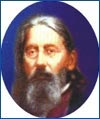Star Anise. Magnoliacea.
Tincture of the seeds.
Provings by Franz and Mure. See Allen’s Encyclopedia, vol. 5, p. 91.
CLINICAL AUTHORITIES.
– Infantile colic, Jeanes, Hom. Clinics, vol. 4, p. 132.
INNER HEAD.
Pains in head ; > evenings, < mornings.
HEARING AND EARS.
Buzzing in ears.
Ringing in ears, followed by sleep.
Itching over left ear, going off when touching place.
SMELL AND NOSE.
Acute catarrh.
Watery discharge from nostrils.
Warm smarting sensation in nose, succeeded by sneezing.
Sharp stitches in tip of nose.
LOWER FACE.
Stinging sensation in upper lip, as if blood would press out, > from touch.
Dryness of upper lip, which is drawn closer to teeth.
Burning in inner surface of lower lip, with sensation as if it had gone to sleep.
TASTE, SPEECH, TONGUE.
Rye bread tastes good, its odor is refreshing.
Tongue covered with aphtha ; most on edges.
Edges of tongue folded like little bags.
PALATE AND THROAT.
Tough, viscid phlegm from stomach ; with old drunkards.
EATING AND DRINKING.
Satiety, after eating but little All food, except rye bread, tastes too salty or bitter, yet appetite is good.
HICCOUGH, BELCHING, NAUSEA AND VOMITING.
Nausea in stomach, extends to chest, then ceases.
Nausea, with gagging and inclination to vomit.
SCROBICULUM AND STOMACH.
Bloating of stomach ; acidity.
HYPOCHONDRIA.
Pain in splenic region.
ABDOMEN AND LOINS.
Three months’ colic, especially if it recurs at regular hours ; bowels disturbed.
Violent wind colic.
Rumbling in abdomen.
STOOLS AND RECTUM.
Stools : bilious ; compact and dark colored.
URINARY ORGANS.
Retention of urine.
RESPIRATION.
Dyspnoea in old asthmatics.
COUGH.
After coughing, feeling of emptiness.
Frequent cough, with pain.
Spitting blood in small quantities and with pus-like phlegm, pain in right chest.
Whitish expectoration.
INNER CHEST AND LUNGS.
Tough, viscous phlegm, with old drunkards.
Pain in region of third rib, about one or two inches from sternum, generally on right side, but occasionally left.
Pain about junction of third right rib with its cartilage ; hemorrhage ; cough ; congestion ; enlarged liver.
HEART, PULSE AND CIRCULATION.
Palpitation, with aphtha and weakness.
NECK AND BACK.
Cramplike drawing, as from a cold, in l. side of dorsal vertebra.
LOWER LIMBS.
Left thigh feels as if broken at middle, when sitting, ceases on rising.
REST, POSITION, MOTION.
Sitting : left thigh feels as if broken at middle.
Rising : sensation as if left thigh was broken ceases.
TIME.
Morning : pains in head <.
Evenings : pains in head >.
ATTACKS, PERIODICITY.
Three months’ colic, especially if it recurs at regular hours.
LOCALITY AND DIRECTION.
Right : pain in chest ; pain in region of third rib ; pain about junction of third rib with its cartilage.
Left : itching over ear ; occasionally pain in region of third rib ; cramps like drawing in side of dorsal vertebra ; left thigh feels as if broken at middle.
SENSATIONS.
As if blood would press out of upper lip ; as if lower lip had gone to sleep ; cramplike drawing as from a cold in left side of dorsal vertebra ; left thigh feels as if broken at middle.
Pain : in head ; in splenic region ; in right chest ; in region of third rib ; generally on right side, but occasionally left ; about junction of third rib.
Sharp stitches : in tip of nose.
Violent wind colic.
Warm smarting sensation : in nose.
Stinging sensation : in upper lip.
Burning : in inner surface of lower lip.
Rumbling : in abdomen.
Dryness : of upper lip.
Itching : over left ear.
TOUCH, PASSIVE MOTION, INJURIES.
Touch : itching ceases when touching place ; stinging sensation in upper lip.
STAGE OF LIFE, CONSTITUTION.
Babies with three months’ colic.
Old drunkards, catarrh of stomach.
Old asthmatics.
RELATIONS.
Compatible : after Acon. and Bryon. in hamoptysis.
“NOTE:
PLAIN TEXT : LOWEST & DESIGNATES AN OCCASIONALLY CONFIRMED SYMPTOMS;
Plain blue: MORE FREQUENTLY CONFIRMED;
BOLD BLUE : SYMPTOMS VERIFIED BY CURES;
BOLD RED : REPEATEDLY VERIFIED;
$BOLD ITALIC RED$ : AN APPROVED CHARACTERISTIC;
θ : STANDS BETWEEN CURED SYMPTOM & PATHOLOGICAL CONDITION;
** : OBSERVED FROM OLD SCHOOL OR NEW SCHOOL;
toxic : Toxicology;
r : Right;
l : Left;
< : Increased or aggravation;
> : Decrease or amelioration;
^^ : Symptoms observed only on the sick “

